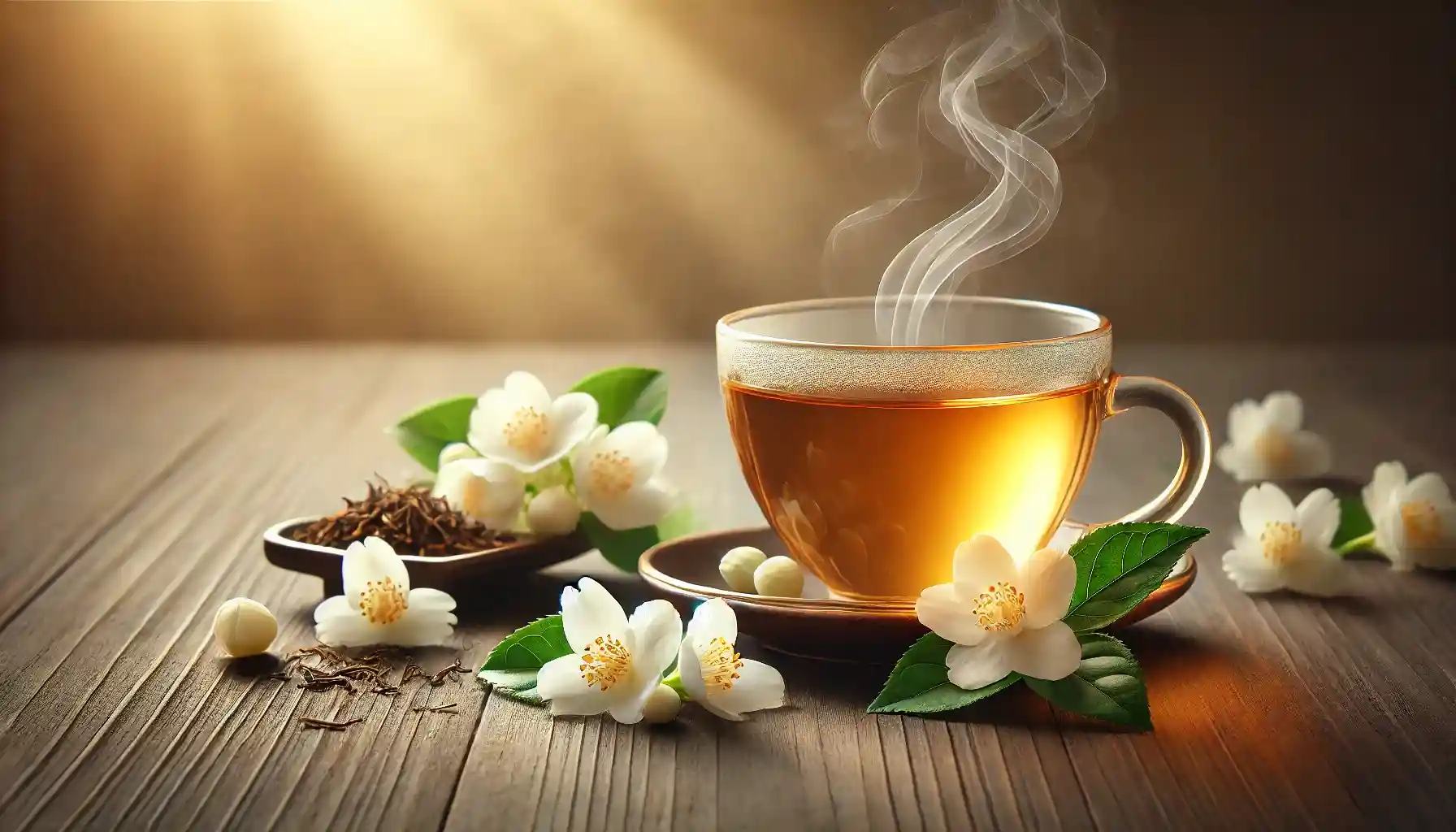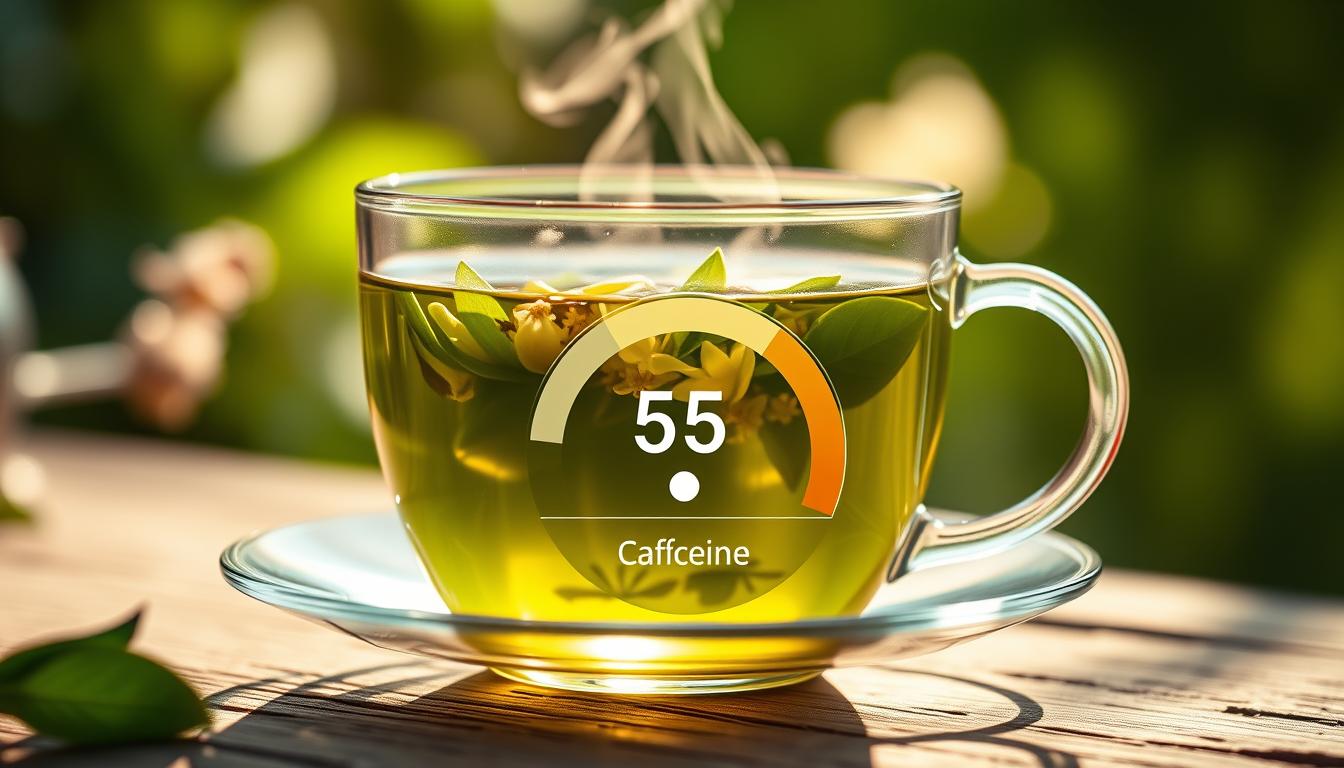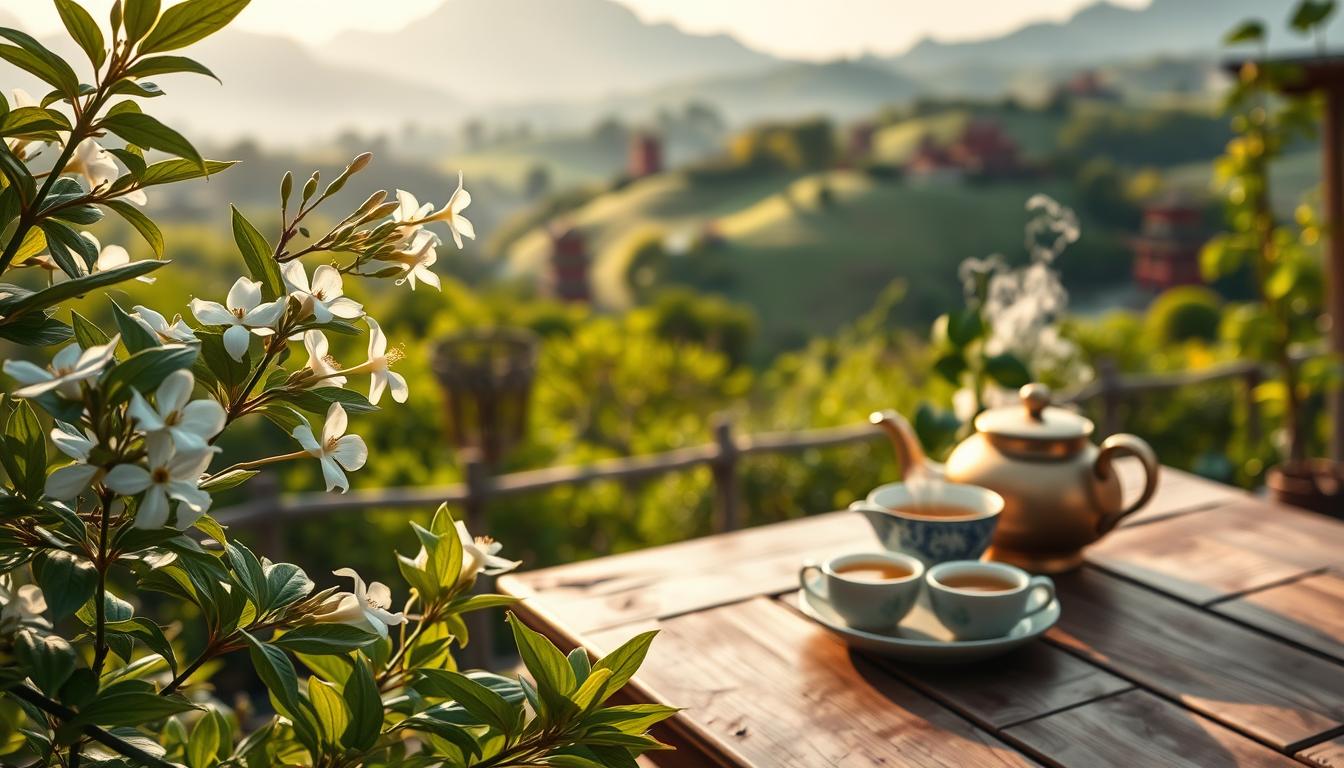Understanding Jasmine Tea and Its Origins
Originating in China, jasmine tea has been a symbol of elegance and wellness for centuries. Its history is deeply rooted in Chinese culture, where it was not only enjoyed for its flavor but also revered for its medicinal properties. The tea’s unique aroma comes from the delicate jasmine flower, which has been used in traditional practices for generations.
Historical Significance and Cultural Roots
Jasmine tea holds a special place in Chinese history. It was often used in Buddhist ceremonies and the traditional Gongfu tea ritual. These practices highlight the tea’s role in promoting mindfulness and tranquility. The type of tea used, such as white tea, also plays a crucial role in its flavor profile and cultural importance.
In ancient times, jasmine tea was considered a luxury item, reserved for royalty and nobility. Its preparation was an art form, requiring precise amounts of tea leaves and jasmine blossoms. This meticulous process ensured that every cup was a testament to the skill and dedication of the tea maker.
Traditional Scenting Techniques
The distinctive scent of jasmine tea is achieved through a time-honored process. Fresh jasmine blossoms are layered with tea leaves overnight, allowing the fragrance to infuse naturally. This method, known as “scenting,” has been passed down through generations and remains a cornerstone of jasmine tea production.
Different types of tea, such as white tea or green tea, are often used as the base. The choice of base influences not only the flavor but also the caffeine content. For example, white tea tends to have a milder taste and lower caffeine levels compared to other varieties.
| Type of Tea | Flavor Profile | Caffeine Content |
|---|---|---|
| White Tea | Mild, delicate | Low |
| Green Tea | Grassy, fresh | Moderate |
| Black Tea | Robust, bold | High |
Understanding the origins and traditional methods of jasmine tea offers a deeper appreciation for this beloved beverage. Whether enjoyed in a ceremonial setting or as a daily ritual, jasmine tea continues to captivate with its rich history and enchanting aroma.
Exploring the Caffeine Content in Jasmine Tea
The caffeine content in jasmine tea varies depending on several factors, including the tea base and brewing techniques. While the jasmine blossom adds a delightful aroma and flavor, it doesn’t significantly impact the caffeine levels. Instead, the type of tea leaves used and how they’re prepared play a more critical role.

Factors Affecting Caffeine Levels
The primary factor influencing caffeine levels is the tea base. Green, white, and black tea varieties each have distinct caffeine amounts. For example, white tea typically contains less caffeine, while black tea has higher levels. The maturity of the tea leaves also matters—younger leaves tend to have more caffeine.
Another key factor is the quality of the leaves. Higher-grade leaves often retain more caffeine due to their careful processing. The jasmine flower used in scenting enhances the flavor but doesn’t alter the caffeine content of the tea leaves.
Impact of Brewing Methods on Caffeine Extraction
Brewing techniques significantly affect caffeine extraction. Water temperature and steeping time are crucial. Hotter water and longer steeping times extract more caffeine, while cooler water and shorter steeping result in less caffeine.
For those seeking a milder option, a shorter brew with lower water temperature is ideal. Conversely, a longer steep can produce a stronger, more caffeinated cup. Understanding these methods allows you to tailor your tea experience to your preferences.
Does Jasmine Tea Have Caffeine?
Many people wonder about the caffeine content in their favorite floral brew. While pure jasmine blossoms are caffeine-free, most blends include a tea base, which does contain caffeine. The level varies depending on the type of leaves used and how they’re processed.

Variation by Tea Base: Green, White, and Black
The caffeine content in this aromatic drink largely depends on the tea base. Green tea blends typically have a moderate caffeine level, while white tea offers a milder option. Black tea blends, on the other hand, contain higher amounts of caffeine.
For comparison, a cup of coffee usually has 95 mg of caffeine, while a cup of this floral drink ranges from 15 to 60 mg. This makes it a gentler choice for those seeking a boost without the jitters.
Influence of Harvesting and Processing Methods
Harvesting and processing methods also play a role in the final caffeine level. Younger leaves, often used in higher-grade blends, tend to have more caffeine. The process of scenting the leaves with jasmine blossoms doesn’t alter the caffeine content but enhances the flavor and aroma.
For those looking to reduce their caffeine intake, opting for white tea blends or shorter steeping times can help. This allows you to enjoy the health benefits, including its rich antioxidant properties, with less caffeine.
Whether you’re drinking jasmine for its calming effects or its unique taste, understanding its caffeine content ensures you can tailor your experience to your preferences.
Health Benefits and Antioxidant Properties of Jasmine Tea
Jasmine tea is celebrated not just for its aroma but also for its impressive health benefits. This floral beverage is packed with antioxidants, which help protect the body from oxidative stress. Studies suggest that its polyphenols may reduce the risk of certain cancer types, making it a valuable addition to a healthy lifestyle.
Mental Clarity and Relaxation Benefits
Drinking jasmine tea can promote mental clarity and reduce stress. The combination of the floral scent and a moderate amount caffeine creates a calming effect without overstimulation. This makes it an ideal choice for those seeking focus and relaxation.
The method of brewing also plays a role. A shorter steep with cooler water enhances its soothing properties, while a longer steep can provide a gentle energy boost. This flexibility allows you to tailor your experience to your needs.
Immune Support and Antioxidant Power
Jasmine tea’s antioxidants, particularly catechins, support the immune system. These compounds help fight free radicals, which can damage cells and lead to chronic illnesses. Regular consumption may also lower the risk of cancer by inhibiting tumor growth.
The blend of jasmine flowers and tea leaves creates a unique synergy. Green tea bases, for example, are rich in antioxidants, while white tea offers a milder option. Each blend provides distinct benefits, making it easy to find one that suits your preferences.
Whether you’re drinking it for its calming effects or its health benefits, jasmine tea is a delightful way to support your body and mind. Its versatility and rich history make it a timeless choice for wellness enthusiasts.
How Jasmine Tea is Made: Process and Quality Considerations
The creation of jasmine tea is a delicate art that combines tradition and precision. This beloved beverage is crafted through a meticulous process that ensures its unique aroma and health benefits are preserved. From the careful selection of blossoms to the final blend, every step is designed to deliver a high-quality experience.
Artful Scenting and Blending Procedures
The scenting process is the heart of jasmine tea production. Fresh jasmine blossoms are layered with tea leaves overnight, allowing the fragrance to infuse naturally. This traditional method, known as “scenting,” has been perfected over centuries.
During the process, the blossoms are often re-layered multiple times to ensure a rich aroma. This technique not only enhances the flavor but also preserves the health benefits of the tea. The result is a harmonious blend of floral notes and the natural taste of the tea leaves.
“The scenting process is a labor of love, requiring patience and skill to achieve the perfect balance of aroma and flavor.”
Comparing Loose Leaf to Blended Varieties
When it comes to jasmine tea, the choice between loose leaf and blended varieties can significantly impact the drinking experience. Loose leaf tea is often considered superior due to its authenticity and full-bodied flavor. It allows the leaves to expand fully during brewing, releasing their full aroma and health benefits.
Blended varieties, on the other hand, offer convenience and consistency. However, they may lack the depth of flavor found in loose leaf options. Understanding these differences helps you choose the right type for your preferences.
| Type | Flavor | Aroma | Health Benefits |
|---|---|---|---|
| Loose Leaf | Full-bodied | Rich and natural | High |
| Blended | Consistent | Mild | Moderate |
Whether you prefer the authenticity of loose leaf or the convenience of blended varieties, jasmine tea offers a delightful way to enjoy its unique aroma and health benefits. The careful process of making this herbal tea ensures every cup is a testament to its rich tradition and quality.
Conclusion
From its origins to modern-day enjoyment, jasmine tea remains a timeless choice. Its caffeine content depends on the base, with green tea contains moderate levels and white tea offering a milder option. The system of scenting with jasmine blossoms enhances its aroma without altering caffeine levels.
Historically, this drink has been cherished for its cultural significance and health benefits. Its antioxidants support the system, while its calming properties promote mental clarity. Whether you prefer loose leaf tea or blended varieties, the unique scenting process ensures a rich flavor profile.
Experiment with different types to find your perfect balance of flavor and caffeine per cup. Whether enjoyed with milk or plain, jasmine tea offers a delightful way to embrace wellness and tradition.

